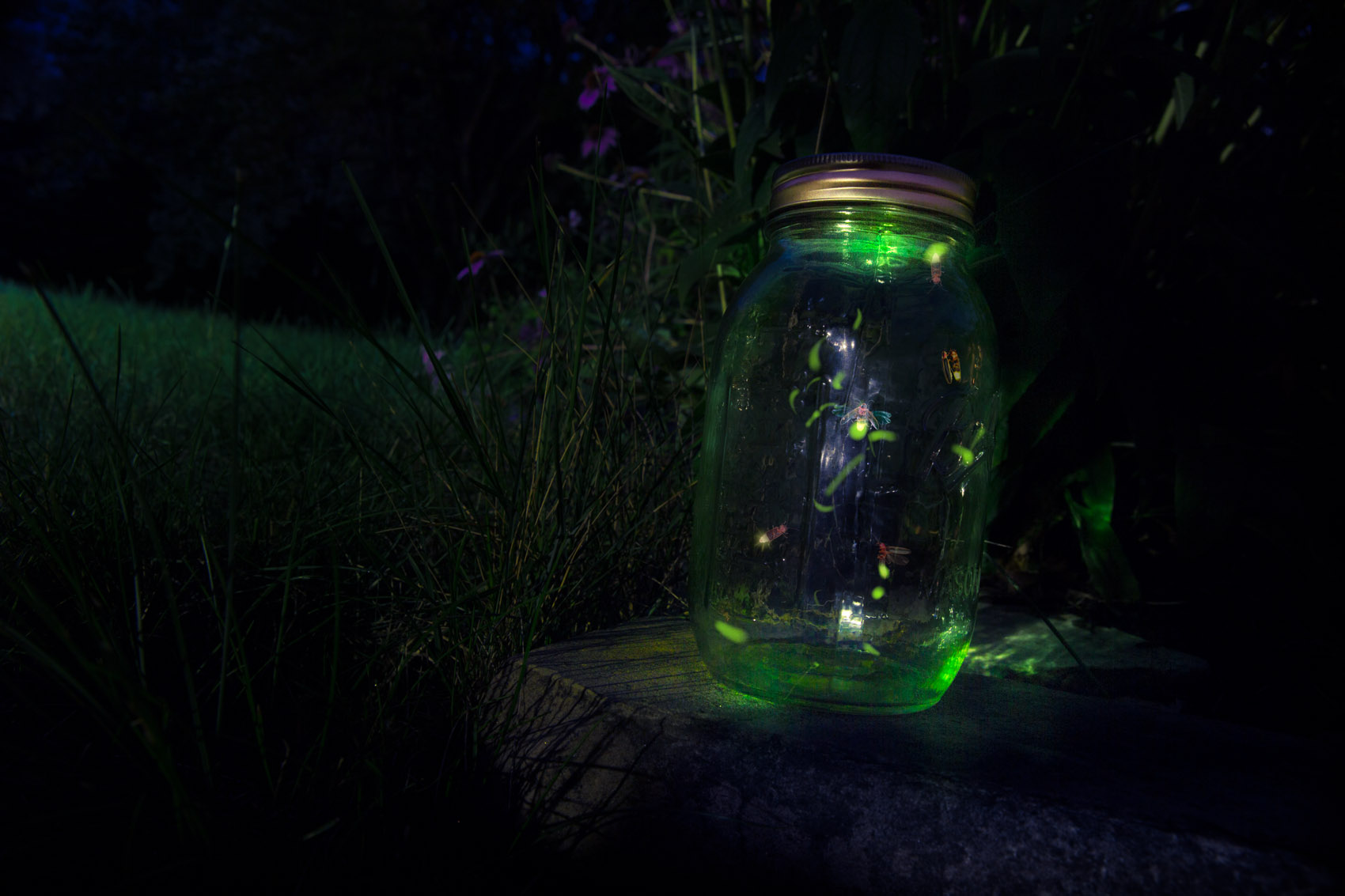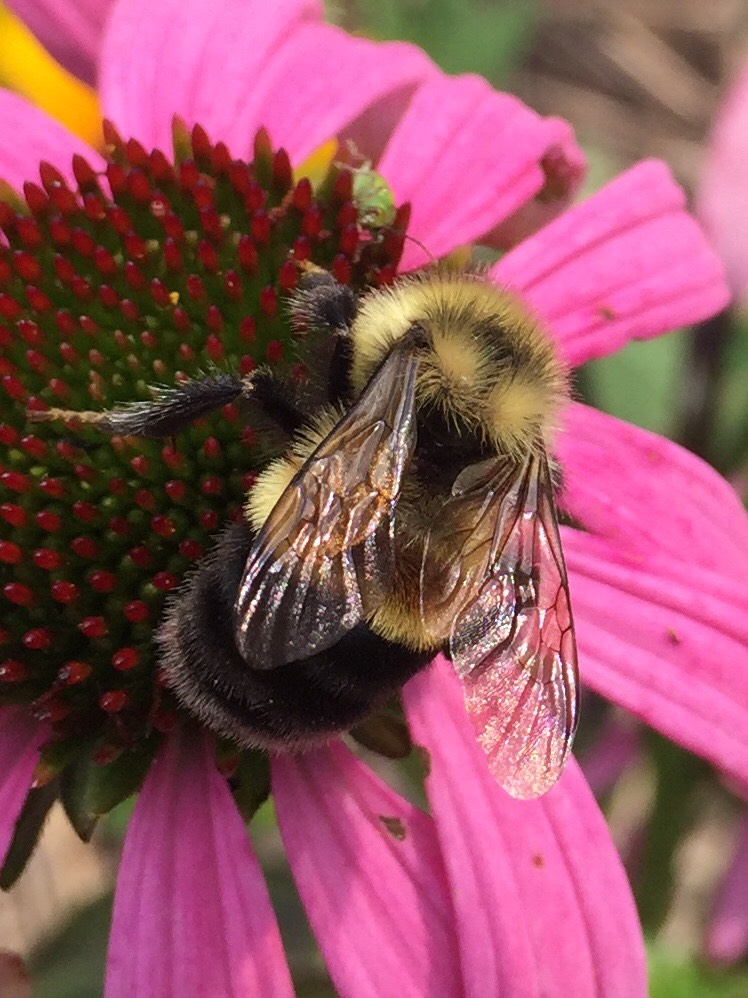Scott Hoffman Black, executive director of the Xerces Society, encourages you to "reimagine your garden: increase the diversity of native plants, ensure that there are places for insects to nest, and avoid using pesticides."
This piece originally appeared in the Spring 2019 edition of Xerces’ biannual publication Wings; it appears here with minor updates. Click to view the full Spring 2019 issue.
I grew up in Omaha, Nebraska. Although we lived in what would be considered an urban area, nature was very important to my family. We did not take exotic vacations, instead camping along the Missouri River or on trips to the Black Hills of South Dakota. A couple of blocks from home was a place we called “the woods”—a two-block-square area that contained forest, meadow, and an ephemeral stream, and that had not yet been turned into houses. I spent time in this area nearly every day, sometimes playing tag or ball with friends or taking my G.I. Joes out for adventures, but often just searching around to see what wildlife I could find. I was the kind of kid who lifted rocks to look for lizards and snakes, and caught butterflies by day and fireflies by night. Sometimes I was late getting home, entranced at the many kinds of insects large and small buzzing under a single streetlamp.

Fast forward to today and I live in a neighborhood far from Nebraska. However, I can still find nature close to home. We have a screech owl in the adjacent woodlot, and a skunk walked through our yard just last week. My wife and I have transformed our garden so that it supports a diversity of bees, butterflies, and other insects, as well as a large number of birds in every season.
A variety of native plants form the core of this backyard habitat, augmented by nonnatives such as blueberry bushes, raspberry canes, apple trees, and a variety of herbs and vegetables. We allow some messiness, leaving piles of branches and leaves to provide places where insects can overwinter in relative safety. We don’t use insecticides or herbicides, instead adopting such practices as washing aphids from plants and picking off cabbage white caterpillars. In some instances, deciding that certain plants are just not worth the work, we replace them with others that will do better in our little patch of land.

By providing habitat for insects, we are helping the entire ecosystem. Our native bees pollinate the berries and fruit trees, and a wealth of insects provide food for birds and other animals. Eighty-eight percent of birds feed on insects at some point in their life cycle; without insects our yard would largely be devoid of birdsong.
Our garden is neither a museum piece nor a natural area. We have a small patch of grass, a trampoline, and a deck. We’ve kept some of the nonnative plants that were here when we moved in, including several incredibly colorful and fragrant hybrid tea roses. It is important that our yard is a home for us as well as our animal neighbors.
The more scientists look at the diversity in urban and suburban areas, the more we find that we can support wildlife from the bottom of the food chain upward. Studies show that suburban areas in the Midwest have a higher diversity of bees than nearby farms do, and surveys reveal that the diversity of butterflies is relatively high even in some of our most urbanized environments.
The rusty patched bumble bee, the first bumble bee listed under the U.S. Endangered Species Act, has some of its last strongholds in suburban gardens and parks. In short, if we want to protect and provide for insects we need to do so in all landscapes. Our parks and our yards are important pieces of the biodiversity puzzle.

Much of the recent news is not good when it comes to insect declines. The population of western monarch butterflies has seen its lowest year ever. Stories of the “insect apocalypse” have hit the popular media (click to read a paper on the topic written by Scott, Matt Forister of the University of Nevada–Reno, and Emma Pelton, of the Xerces Society). The good news is that the evidence clearly shows that if we protect and restore habitat, we can increase populations of bees, butterflies, and other insects. The same holds true for your local stream or wetland: thoughtful management can bring back insect life. Restoring and protecting habitat works.
Everyone can—and should—take part. I encourage you to reimagine your garden: increase the diversity of native plants, ensure that there are places for insects to nest, and avoid using pesticides. Xerces has a variety of materials to make such efforts easier; start with our Bring Back the Pollinators page and our Pollinator Conservation Resource Center. You can also work with your local park or watershed group to protect and restore habitat, and urge your home town or local campus to join the Bee City USA and Bee Campus USA movements. Working together we can make a significant difference.
Further Reading
This piece originally appeared in the Xerces Society publication Wings. Read the full spring 2019 issue.
Read the paper Declines in insect abundance and diversity: We know enough to act now, written by Matt Forister, University of Nevada–Reno; Scott Hoffman Black, Xerces Society; and Emma Pelton, Xerces Society.
Ready to create or enhance your own pollinator habitat? Check out our Pollinator Conservation Resource Center.



